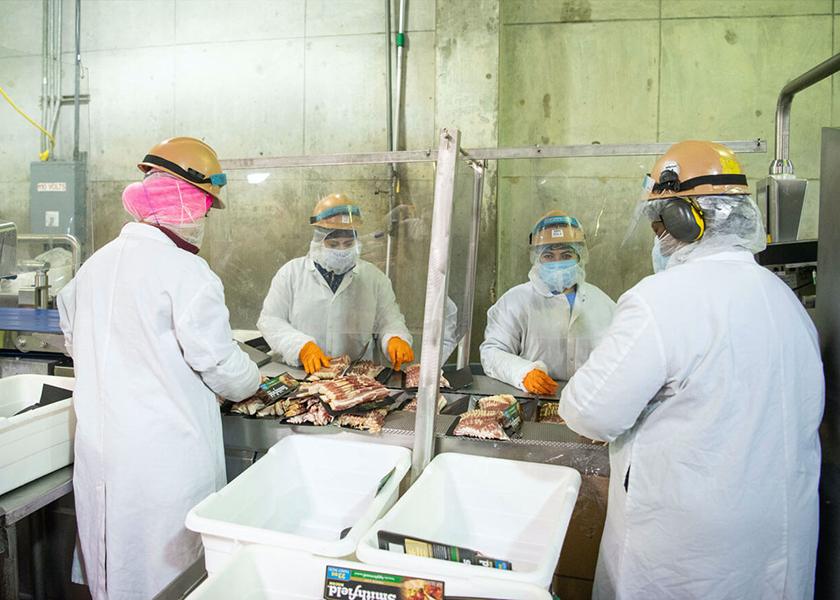Meat Industry Reaches All-Time Low Injury Rate Despite Activist Claims

Despite activist claims meat and poultry companies have ignored the safety of men and women who work in their facilities, a new study shows U.S. meat and poultry packers and processors have reached a new, all-time low for injuries in the workplace. That’s according to a new Bureau of Labor Statistics (BLS) annual report for 2019.
The BLS report showed final 2019 incidence rates for non-fatal occupational injuries and illnesses recorded with the Occupational Safety and Health Administration (OSHA) continued to improve, reaching an all-time industry low of 4 cases per 100 full-time workers (per year).
For perspective, just 10 years ago, the North American Meat Institute (Meat Institute) reports this number was 9.3, while in 1999 the incidence rate was 17.1.
“A 20-year injury rate reduction from 17.1 to 9.3 to 4.0 illustrates the sustained industry trend of workplace safety improvement,” the Meat Institute reports.
The BLS report proves year after year, meat and poultry companies remain committed and have invested billions of dollars to reduce worker injuries and illnesses, Julie Anna Potts, president and CEO of the Meat Institute, said in a release.
“Our members are proud of their record to reduce workplace related injuries over the last 20 years and will continue to adopt new technologies and methods to ensure the safety and well-being of its critical infrastructure workforce,” Potts said.
Still, anti-animal agriculture and activist groups continue to falsely accuse the meat and poultry industry of ignoring the safety of the men and women who work in their facilities.
According to Hannah Thompson-Weeman with the Animal Agriculture Alliance, at the 2020 Taking Action for Animals Conference, a major theme of the conference was the COVID-19 pandemic and public health, with speakers claiming that animal agriculture will cause future pandemics.
“Just as meat and poultry companies have proven their determination to reduce injuries, they are remaining vigilant to reduce the spread of COVID-19,” Potts said. “They continue to check temperatures, provide testing, supply additional personal protection equipment such as facemasks and shields, conduct contact tracing, provide enhanced employee benefits like paid leave, and much more. Although the industry was challenged in the spring, numbers of positive cases associated with meat packing dropped significantly into the summer.”
Meat Industry Prioritizes Worker Safety
Worker safety was declared a non-competitive issue by the Meat Institute in the 1990s, encouraging member companies to collaborate to find solutions that prioritized and enhanced worker safety. Together with OSHA and the United Food and Commercial Workers union, the Meat Institute also developed Voluntary Ergonomic Guidelines for the Meat Packing Industry — guidelines that OSHA called a “model” for other industries.
“In 2019, labor and human rights, including worker safety, was identified as a key pillar in the Meat Institute’s sustainability efforts and the industry is developing additional metrics and targets for continuous improvement over the next decade,” the Meat Institute said in the release.
Most recently, the Meat Institute and OSHA signed a two-year alliance in August to provide Meat Institute members, the public and other stakeholders with information, guidance and access to training resources that will help protect workers. During this alliance, participants will develop information to recognize coronavirus transmission risks and best practices for preventing transmission, and on challenges for exposure control in meatpacking and processing facilities.
For more information on how the meat and poultry industry is working to stop the spread of COVID-19, go here.
More from Farm Journal:
Animal Activists Attack Iowa Select Farms
Animal Ag in the Crosshairs at Another Virtual Activist Gathering
NAMI, Other Groups Seek COVID-19 Vaccine Priority







